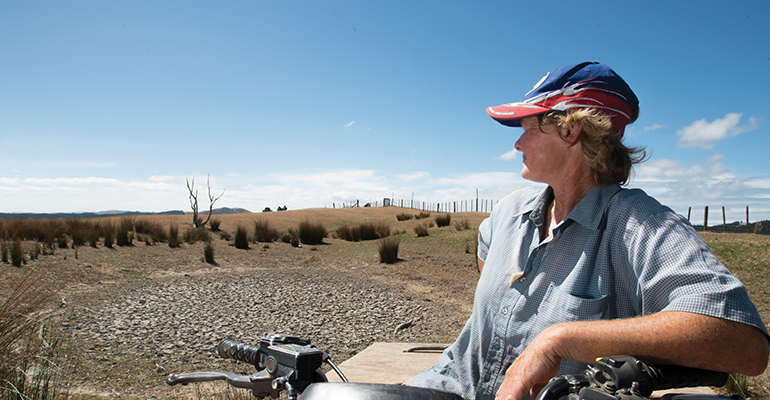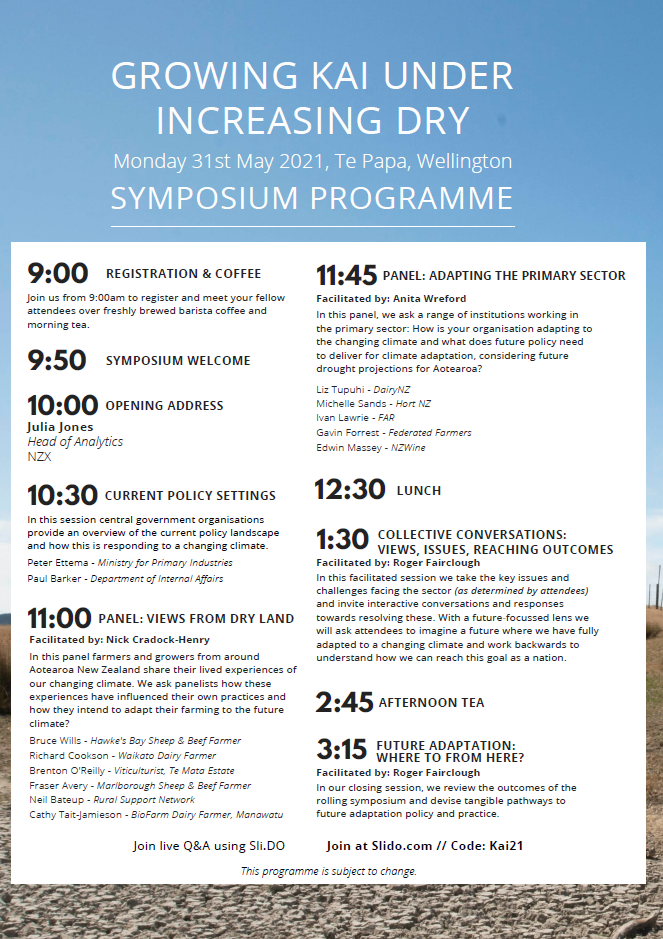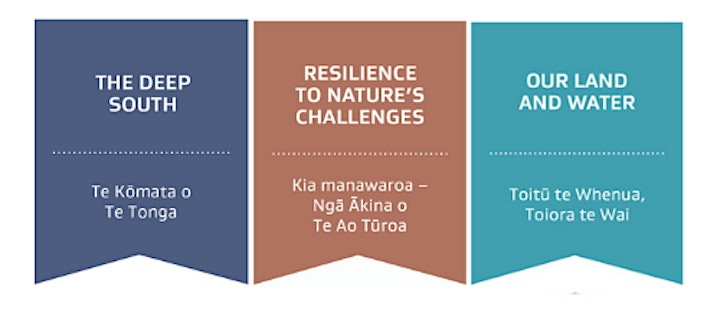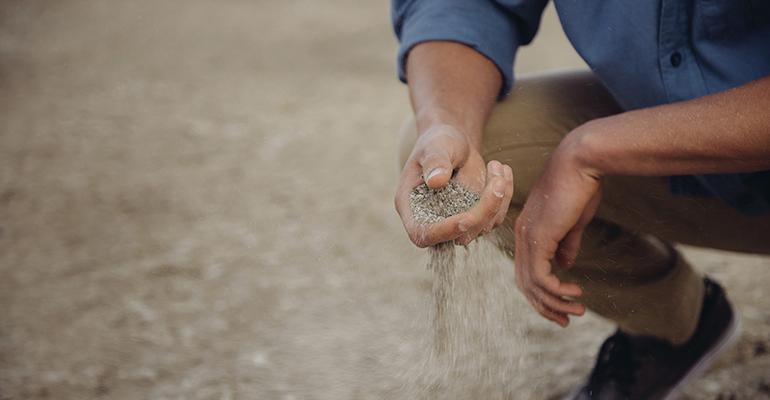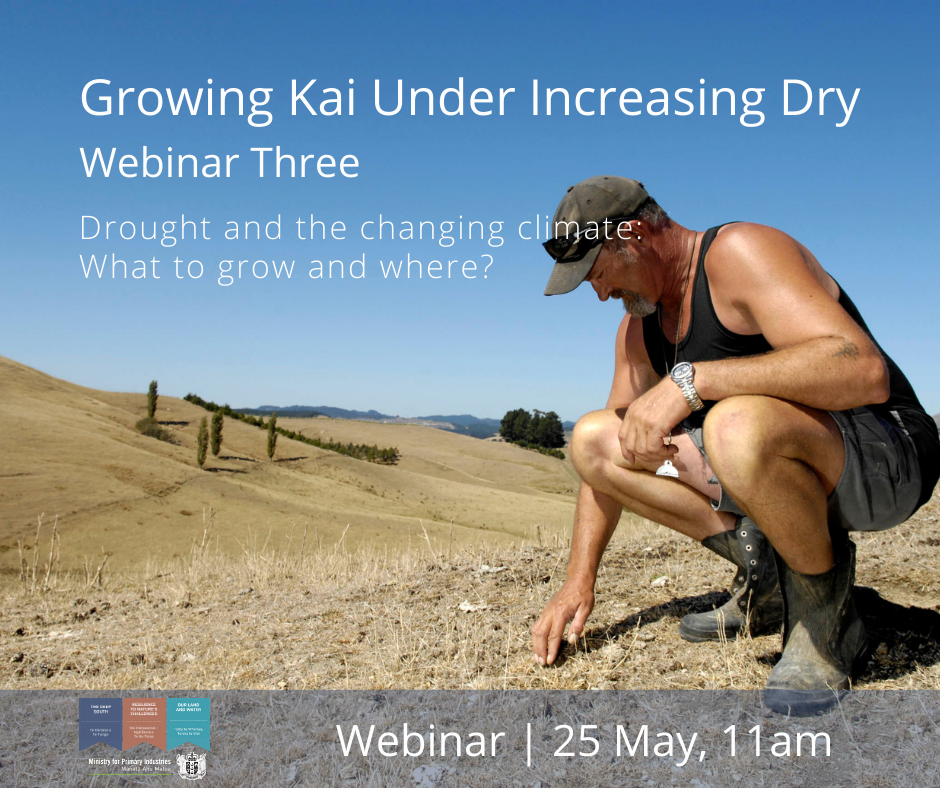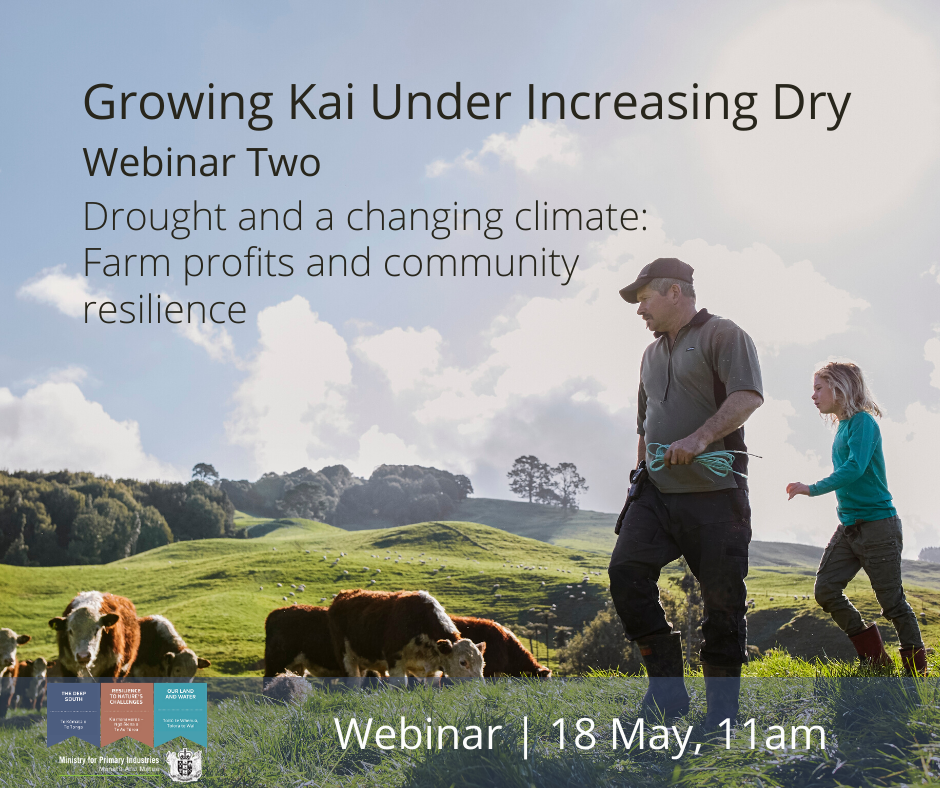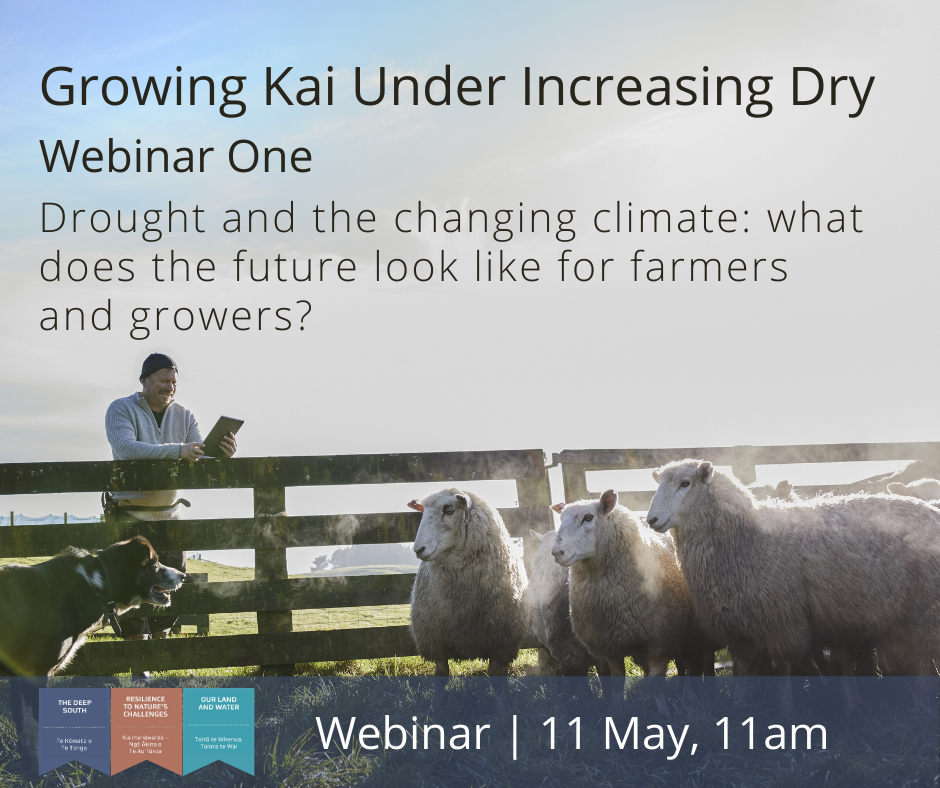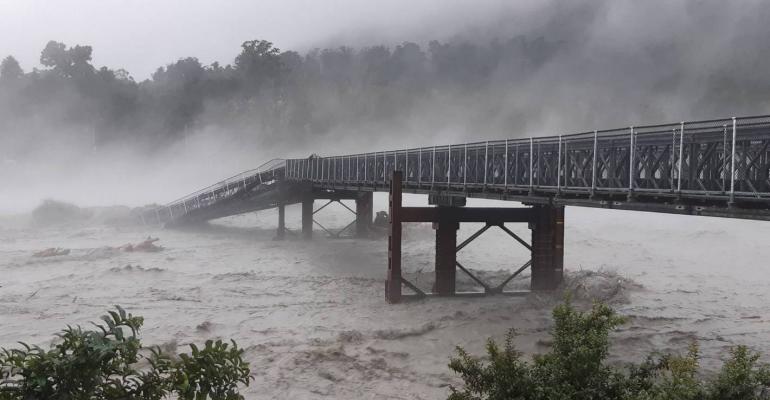A message from the Kāhui Māori of the Deep South Challenge
We recognise the deep knowledge, skills and experience that Māori communities possess to adapt to the changes occurring within our environment and communities as a result of climate change.
Historical experience has proven that upholding mātauranga and tikanga Māori, while embracing the benefits of other knowledge systems, allows us to reinterpret, adapt and strengthen ourselves in a world that is forever in motion.
The Kāhui wishes to keep these fires burning. We have a responsibility and an obligation to Ahi kā, Ahi tere, Ahi taitai, Ahi tahutahu, Ahi whakaene, Ahi kōmau, Ahi hinu, Ahi Kōpae, Ahi kāroa. We want to support the work Māori are already undertaking not just to survive, but to flourish and thrive against a background of broader social and global changes.
With the release of our two new funding initiatives, Te Aho and Te Taura (totalling $1.45M), our goal is to support organic, creative, innovative and Māori responses to the impacts of climate change. These initiatives have been developed in recognition of the diversity of experience, knowledge and responses to climate change across and within ngā iwi and hāpori Māori.
Please note: Both our funding rounds have now closed. Please see below for key dates.
Funding process
Both Te Aho and Te Taura will follow a two-step process:
Step 1: You submit your research idea as an “Expression of Interest” (don’t wait until the deadline! Submit early so we can get in touch if we have questions)
Step 2: An invitation to provide a full proposal through a Request for Proposal (you’ll be invited if your idea is within our scope)
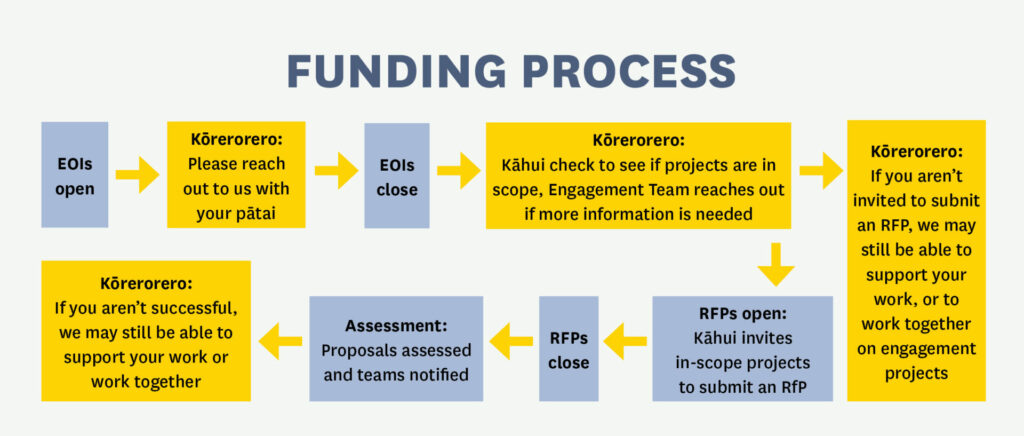
About this funding
Click on the questions below for some quick fire answers to common pātai:
What kinds of climate adaptation research projects are you looking for?
We’re looking for projects that support mātauranga and rangatiratanga in relation to our changing climate. We also encourage projects that will help you to understand, assess and respond to climate risks that are important/relevant to you. Please have a look at these Kaupapa Rangahau: potential focus areas. We encourage research that speaks to these gaps, but we don’t want you to feel limited by these ideas. If you have an idea about climate adaptation research, please submit an Expression of Interest.
You can download and print these research priorities here:
| MĀTAURANGA |
|---|
| Mātauranga and our changing climate Drawing on mātauranga to activate, grow and pass on climate knowledges |
| Te Reo Māori and climate change Language revitalisation in the context of climate change |
| Resilience and well-being Community cohesion, identity, attachment, wairua and well-being in the face of future displacement, trauma and urbanisation. An ethic of restoration for future generations. |
| Tikanga for planning and decision making Mana, kawa, tikanga, ritenga |
| RANGATIRATANGA |
|---|
| Te Tiriti o Waitangi Te Tiriti implications and Tikanga Māori in relation to managed retreat (Including: national fund for managed retreat, and the proposed Natural and Built Environments Act, Strategic Planning Act and Climate Change Adaptation Act) |
| Tino Rangatiratanga: Leadership and autonomy Governance for climate adaptation Constitutional transformation in the context of climate change |
| He Atua Legal personhood for atua and tūpuna Māori in the context of climate change: Could a “law of Ranginui, Papatūānuku and Tangaroa/Hinemoana” support climate action and adaptation in Aotearoa? |
| Decolonising climate action and adaptation Indigenising policy and action; Mana wāhine and climate policy and action; Supporting rangatahi to advocate for Māori rights & responsibilities |
| He kai kei aku ringa Food security and food sovereignty in relation to future climate crisis and future land-use changes likely under climate change |
| Local government: Barriers and opportunities Research that identifies effective strategies and responses to support iwi and hapū to be self-determining adapting to climate change, within (or in spite of) existing local government legislative infrastructure |
| UNDERSTANDING RISK |
|---|
| Ecosystem impacts and restoration Impacts on and restoration of our ecosystems (terrestrial, freshwater and coastal-marine domains) and taonga species |
| The Māori economy The Māori economy is heavily dependent on the natural environment. How exposed is it to climate change? How can pākihi Māori, hapū/iwi trusts, Māori entrepreneurs, artists, and weavers etc, adapt? |
| Financial risks for the Māori economy Implications for Māori agents such as Māori holding corporations, pākihi Māori, hapū/iwi trusts and incorporations of the Financial Sector (Climate-related Disclosure and Other Matters) Act |
| Cultural heritage Risks to marae, wāhi tapu, wāhi tīpuna and other cultural heritage due to ongoing sea-level rise, extreme weather events and wildfire |
| The built environment Assessing and addressing risk to infrastructure important to Māori including: drinking water supplies; wastewater and stormwater systems; transport networks; emergency management systems |
| Just transitions Principles and policy behind a just transition from a Māori perspective: understanding & supporting Māori to shift from carbon-intensive industries; understanding & supporting Māori landowners to reduce or eliminate carbon emissions |
Why are you releasing two different funds? What’s the difference between Te Taura and Te Aho?
Whānau, hapū and iwi have told us clearly that climate research funding needs to support communities who are taking action now to protect themselves against climate change.
Our Te Aho fund aims to support action research (hands-on, on the ground research). Te Aho funds don’t require you to be affiliated to a university, Crown Research Institute, or other research organisations. Te Taura research funding is targeted towards larger research collaborations between communities and research organisations.
Te Taura has a focus on impact at a larger scale: regionally or nationally. Please take a look at this Te Aho and Te Taura table to get a sense of the similarities and the differences between our two funding streams:
How will you decide which projects are successful in getting funded?
The assessment criteria for Te Aho and Te Taura are listed in this document. They are quite different from previous assessment criteria we have used before. We are trying to do things differently, in order to support whānau, hapū and iwi to achieve their own research aspirations. Have a look at the assessment criteria and if you are unsure about what they might mean for you and your project, please get in touch.
How will we “report” on our research? Can we report using mātauranga Māori methods?
Yes! We strongly encourage research that generates and transmits knowledge within te ao Māori. This means you don’t necessarily need to write an English-language research report or journal article, unless you identify that this will have an impact for your community. You can report on your research in oral and physical ways, and you can also report in/on your own whenua. Whatever your research outputs might be, they should be designed to meet the needs of your community. See this Te Aho and Te Taura table for more information about reporting.
What will the Request for Proposal (RfP) involve?
If your research idea is within scope, we will invite you to submit a full research proposal. This will be a more in-depth submission and will encourage your team to think through your research methods and to articulate your research outputs in concrete terms.
What questions are in the EOI application form?
- Your email
Tēnā whakamāramatia mai, nō hea koutou, ko wai koutou?
- Your name
- Your hapū / iwi
- Your phone number
- Your hāpori / rōpu / institution / organisation
- What fund are you applying for?
- Key members of your rōpū or research team We’re interested in the range of skills, experience and knowledges you might activate. Limit 100 words.
- Which community do you intend will benefit most from this research? For example, the name of the marae, papakāinga, hāpori, hapū or iwi where your research will be grounded. If your research is regional or national in focus, please give details.
- What is your main kaupapa, in relation to this climate research funding round? In later questions, you’ll have an opportunity to describe your project in more detail. Here, please provide a short summary or high-level perspective of your main kaupapa.
- Does this kaupapa speak to one or more of the focus areas and priorities? Please see our guidelines for more information. If it doesn’t, we’d still like to hear from you.
Diving deeper: Gathering information about your proposed research
- What are your (or your community’s) moemoeā or aspirations in relation to this research? We are interested in how your research might support climate resilience, wellbeing, and community or national transformation. Limit 200 words.
- What are your potential research goals and potential outcomes? Please number these goals/outcomes (and provide anywhere from 1 to 3 or 4 goals). Limit 200 words.
- In relation to your research goals, which of the following statements best describes your team or rōpū?
- We’re feeling confident with our proposed research and will be ready to submit an RFP if/when invited
- We’re reasonably confident with our proposed research, but still need to work through some of the details
- We’re still working through our potential research goals
- We’re just at the conceptualisation phase
- Other
- Please describe how mātauranga Māori might be activated through your research. If your project may also use or blend other science methods, please give details. What steps will be involved in undertaking and completing your project. Limit 200 words.
- Indicative budget
He aha ngā pātai i roto i te <strong>kīanga puaki whitawhita</strong>?
- Tō īmēra
Tēnā whakamāramatia mai, nō hea koutou, ko wai mā koutou?
- Tōu ingoa
- Tō hapū / iwi
- Tō nama waea
- Tō hapori / rōpū / whare mahi / ohu mahi
- Ko tēhea pūtea e tonoa nei?
- Ngā mema pū o tō ohu o tō rōpū rangahau rānei E ngana nei kia mohio ake he aha rā ngā pūkenga, whēako me ngā mātauranga tērā e hihiko ai. Kia 100 pū ngā kupu whakautu.
- Ko tēhea hapori ka whiwhi hua rawa i tēnei rangahau? Arā, te ingoa marae, papakāinga, hapori, hapū, iwi rānei kei reira nei tō rangahau e tau ana. Mehemea he aronga rangahau whānui ā rohe, whānui ā motu rānei; tēnā koa whākina mai ōna taipitopito.
- He aha nei tō kaupapa matua e whaipānga ana ki te wātaka pūtea rangahau panoni āhuarangi nei? Taihoa iho kei ngā uiui e whiwhi wā ai koe ki te tuhi whakaahua mai i tō kaupapa kia taipitopito ake. Tēnā mai koa he whakarāpopototanga, he tuhinga kounga whakataurite mō tō kaupapa matua.
- Whai tikanga tonu te kaupapa nei ki tētahi, ētahi rānei o ngā aronga matua? Tirohia ngā ara tohutohu mō ngā whakamārama. Ki te kore e whai tikanga, nei ka hiahia kia rongo tonu atu i a koe
Ruku hōhonu: Kohikohi whakamārama e pā ana ki tāu tūtohi rangahau
- He aha nei ō moemoeā, ngā wawata me ngā manako rānei o tō hapori e pā ana ki tēnei rangahau? E ngana nei kia mōhio ake pēhea rā te tautoko a tō rangahau kia toitū tonu ai te āhuarangi, te hauora, te whakawhanake ā hapori ā motu rānei. Kia 200 kupu pū hei whakautu.
- He aha nei ngā whāinga pito mata a tō rangahau me ngā hua ka puta? Tohua kia tatauria mai ngā whāinga/putanga (kia 1 ki te 3 ki te 4 rānei whāinga) kia 200 kupu pū hei whakautu.
- I te whaipānga o ngā whāinga rangahau, ko tēhea o ēnei rerenga kupu e hāngai nei hei whakaahua i tō ohu, tō rōpū rānei:
- E tino māia nei mātou ki tā mātou tūtohi rangahau otirā tērā e rite mō te tuku tono pūtea rangahau inā karangatia.
- E āhua māia nei mātou ki tā mātou tūtohi rangahau, engari me whakarite tonu ake i ētahi taipitopito.
- E whakatau tonu ana mātou i ō mātou whāinga rangahau pito mata.
- E whakahuatau tonu ana mātou.
- Arā noa atu.
- Me kupu whakaahua mai i te pēheatanga o te matāuranga māori e hihiko ai i tō rangahau. Mēnā he ritenga pūtaiao kē hei whenumi mai, whākina mai. Mēnā e pūrangiaho ana tō tukanga rangahau ki a koe, tēnā tukua mai ngā whakamārama whānui tonu. Kia 200 kupu pū.
- Tahua tūtohu
Can I download the EoI form as a Word document?
Yes, you can download these forms in Word. However, we strongly encourage you to submit your answers using GoogleForm (below).
More FAQs (these are updated weekly!)
Do we have to partner with a mainstream institution to apply for Te Taura?
No! Not at all. It may be more likely that Te Taura applications involve relationships or collaborations with either universities or CRIs. However, it’s by no means a criteria for Te Taura applications. We want to encourage research collaborations that are meaningful and that support kaupapa Māori research and the vision you have for your rangahau.
Can we apply for both Te Aho and Te Taura? Can we submit multiple EoIs?
Yes, we’re happy for you to submit multiple EoIs. And yes, we’re happy for you to apply to both research funds. In both cases, please take the process seriously and think carefully about your kaupapa, your capacity and your research goals. Please submit your best applications, so we get a real sense of your priorities and your readiness to undertake research. We also strongly encourage members of the same iwi to work together. Multiple applications from members of the same iwi on the same kaupapa will be difficult for us to assess.
Can Councils apply for this funding, in partnership with iwi?
Strictly speaking, no. This funding is for kaupapa Māori research that is by Māori and for the benefit of Māori communities. However, if iwi want to pursue research that involves or requires Council input (such as research, engagement, data provision, etc.), these kinds of projects are definitely “in-scope”. We would hope that Councils provide in-kind funding, for example through staff resource. We won’t fund roles or contributions to projects where these are already funded as part of the everyday business of Councils.
How will the total pool of funding be allocated? Will it be equitably shared across the motu?
The Challenge’s final decisions will depend on the range and nature of all the project ideas that are submitted. We have limited funding. We may choose to fund across different geographic areas. Or, if there is a strong case that research in only a few rohe is likely to bring significant benefits nationally, we might invest in only a few geographic areas. Regardless, we encourage you to submit your best research ideas.
Are the project start and end dates strict?
The end dates for these projects are strict, yes. The Deep South Challenge is only funded until June 2024. All research projects must be finished by February 2024, in order to ensure we can do the best post-project engagement possible. The long timeframes for assessing and contracting projects reflect our experience in how long it can take to contract with multiple partners, and also take into account delays in research. But these timeframes are not targets – if there are no problems with contracting, projects can begin as soon as they are ready.
Do I need to know the exact cost of the project for the EoI?
For the EoI we only ask you to give us an indication of the total project cost. The full breakdown and detail of the project budgets will be worked through in the full RfP and we will provide you with detailed guidance notes to support you to create a detailed budget that meets the needs of your project.
Is there a minimum time-frame for projects?
A key part of our funding decisions will be ensuring that the timeline and budget you propose is suitable for the scope and nature of the project. We would expect projects to take anywhere between six to 18 months, but we will provide more detailed guidance during the RfP process.
Can we get funding to create a final product, like a book, a handbook, a documentary or a board game?
Our research funding supports knowledge gathering and knowledge generation. A product, such as a book, may well be a vital output from the research, and a natural response to your research findings. You can allocate some of your budget to supporting these kinds of outputs. We want your research to be useful and usable, both for your own community and for other communities. Please do keep in mind, however, that the research itself is the main game.
Can non-Māori researchers apply?
As this funding is for the benefit of Māori communities, we expect Māori research teams and/or Māori communities to be leading and driving research projects. Some teams may include Pākehā or tauiwi researchers who bring specific expertise, but this fund is to support research that is by Māori, for Māori.
We would like some specific expertise/science input into our project, but we’re not sure who to approach, can you help?
In developing your EoI you can identify areas where you might want some external support or a specific set of skills. We may be able to help connect you with scientists or other expertise to help you with your project.
Are scholarships available?
We encourage projects to consider the opportunities for growing the next generation of researchers. There is scholarship funding available and we will discuss the process for distribution of scholarships with project teams. At this stage, please indicate on your EoI if you have a potential scholarship student within your project, or would like to support one.
Kaupapa specific: Will you fund projects that focus on…
- Climate adaptation strategies
- Pest control
- Health
- Our marine area
All these projects are in scope, but the focus of the activities must have research and climate change at the centre of the project. By “research,” we are referring to the processes of knowledge/mātauranga creation, application and/or transmission. In terms of climate change, we are taking a broad approach, i.e. climate justice, resilience relationality with te taiao. That could include kaupapa that are not specifically ‘climate focused’ but are important interventions to climate impacts. As above, the output (such as a climate change strategy) is a response to the research findings, rather than the primary focus itself.
How important is it for us to partner or collaborate with other groups or organisations? Is the kāhui able to suggest or recommend potential partners (and/or make introductions) if we don’t already have any?
There is no requirement to partner with anyone else, but for many projects it will make sense to work collaboratively, or to utilise/access data or expertise that is held with others (for example, local or regional councils). If you don’t already have research partners lined up, but have an idea of what your needs might be, we may be able to identify potential researchers or existing data that could support your project. Please ask if so! It will depend on your kaupapa, so we encourage you to get in touch with our engagement team early.
Is specific climate language required in the EOI?
E Kao! The first part of this process should feel like a conversation or dialogue, so we encourage plain language applications that get to the heart of your project – i.e. why the research/rangahau is needed, what the project will involve, and how it will benefit or impact the community or people you are working with/on behalf of. You do need to demonstrate that your project is responding to a need/gap/opportunity in relation to the causes or impacts of climate change (in fact, this is key to presenting a strong proposal). But! we acknowledge that a genuine mātauranga Māori approach does not treat “climate change” as an isolated environmental issue. Strong EOIs will clearly articulate the connection between your project goals and outcomes, and the causes and impacts of climate change, whether they be environmental, physical, cultural, spiritual, social, political, legislative, health, justice etc etc. And don’t forget that you can submit your application in te reo Māori!
Do we need to have “qualified” researchers involved in our project?
Not everyone who applies will be immersed in formal academic research landscapes, and we recognise that mātauranga is held by kaumātua and haukāinga, whose knowledge and research experience is embedded in (and springs from) a physical place as opposed to an institution. We do, however, encourage you to think about how your project may build on or connect with other relevant research that may already exist in relation to your kaupapa. This will be one of the areas explored during the RFP stage. If you are unsure of what research might exist in your area feel free to reach out. You can also look at our website to see the kinds of projects that have been funded in the past.
Does the funding have more of a community focus, or is it of equal value to work with Māori Trusts/Incorporations etc?
The funding is intended to support research projects that are clearly able to link the issues and outcomes for a given group (whether that be a whānau, community, trust, or incorporation).. The research should have an impact on that group and we encourage you to look at the assessment criteria (on this page) for more detail around assessment.
You have asked for early applications so that the kāhui can ask pātai of the research if needed. Is it advantageous to put in an early EOI before all the research partnerships are in place, or wait until closer to the deadline when the research has been better finalised with partners?
We do encourage early applications if you feel your project proposal is established and ready. We will only get in touch with you if we think your EOI would benefit from additional information, or if something is unclear. If you already know that you have gaps, it would pay to wait to submit an EOI until you have as much information as possible.
Are there particular things the funding can’t be spent on?
We will be releasing a more detailed guide to help you formulate the detail of your budget (including exclusions) prior to the RFP deadline.
Do you anticipate heavy subscription to the fund? What is the total funding pool and number of applications you are looking to fund?
Our total pool of available funding is $1.4m and we do expect to receive a high number of EOIs. However, each project will be assessed on its own merits, and there is no cap on the number of projects we are able to fund, only on the total pool itself.
Can I watch a video about this?
Yes you can. Here’s a recording of a conversation hosted by Nadine Hura, Naomi Simmonds with community members interested in applying for Te Taura and Te Aho funding.
Key dates
- EOIs for both Te Taura and Te Aho open on June 1, 2021
- EoIs close on different dates:
- Te Taura EoIs close July 15, 2021, teams notified by August 1, 2021
- Te Aho EoIs close September 1, 2021, teams notified by September 18, 2021 (slightly extended)
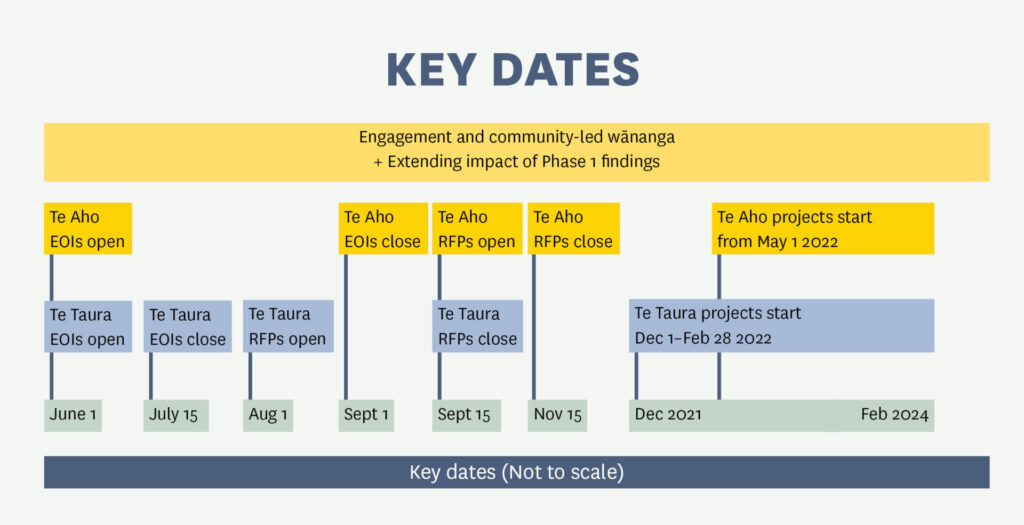
More questions?
Please don’t hesitate to get in touch if you have more questions or would like us to visit your rohe. Contact our Kaitakawaenga: Nadine Hura or Naomi Simmonds.
If you would like to speak with one of our Kāhui Māori members, please contact: Sandy Morrison (Programme Leader).
“Kōtuia ki te aho rangahau kia mau ai,
Sew with the thread of research to maintain, plait the rope of ancestral knowledge to tightly bind and sustain.
whiria te taura mātauranga kia ita”
